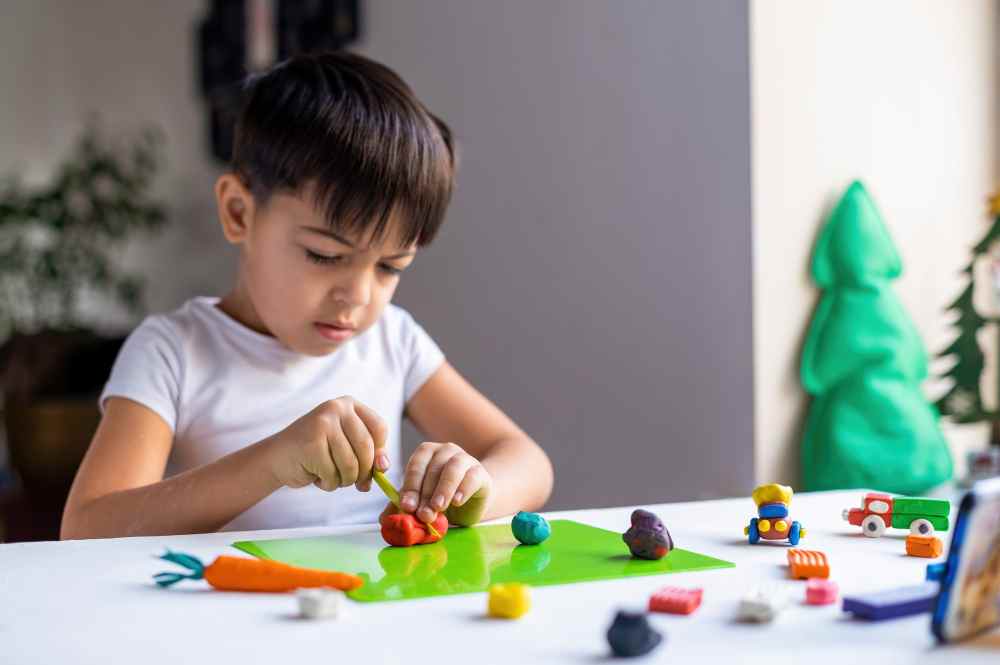Sensory play provides young toddlers and children with a limitless number of opportunities to grow and learn. While utilizing their senses to investigate and explore the environment, children build coordination, enhance concentration, and develop gross and fine motor skills through sensory play. In addition, sensory activities expand their curiosity, creative thinking, and problem-solving and solution-testing abilities.
Pre-schoolers will enjoy learning about the five senses, especially in the early stages of the year. This is because children naturally interested in the world around them, and they frequently explore and learn using their senses.
Here are 10 Amazing Five Senses Activities For kids
- Read and Locate
This activity has two purposes: it helps you focus on visual stimuli and it helps you read.
Fill a basket with all of your belongings, such as a toy vehicle, a ball, and pencils.
On a piece of card stock paper, jot down the goods you’ve placed in the basket.
Begin by having your youngster read each item on the list to you. Then, encourage them to make use of their phonics abilities.
After they’ve finished reading it, have them look for it in the basket and match it up.
- Taste bottles
Cut cards stock or card paper into different flavors and label them.
Allow the children to sample the bottles. To begin, have them try all of them.
Assign the task of matching the bottles to the relevant labels to the children.
Next, the kids can describe what products they can locate in the kitchen that symbolize these flavors.
- Sound trip
On notebook paper, make a basic chart. There are only two columns: one for the sound you’re looking for and another for a tick or a star.
Make a note of the sounds you hear in your neighborhood or anything else you think you’ll listen to—for instance, sirens, dogs barking, automobiles, birds, and so on.
Tape the paper on a piece of construction paper and go for a walk.
Talk to the kids about the noises as you hear them and have them tick them or put a star next to them.
- Touch and describe
Some of the most descriptive terms come from our sense of touch. Request that the children feel a range of items and write down the adjectives they would use to describe them. Make tiny strips out of each of the materials you’ll be using. Each material should be cut into two strips. Fill the various compartments of the tray with the different materials.
Tape or glue the remaining strips of material on card stock paper, which has been cut into small rectangles. Allow the children to touch and explain each of the materials in the tray. Encourage children to use words like soft, smooth, rough, bumpy, squishy, sparkly, etc. When they’re finished, have them match the card stock strips in the tray to those in the tray.
- Sound matching
Fill one thing – for example, if you’re loading the eggs with uncooked beans and you have red and yellow eggs, fill one yellow egg and one red egg. Carry out the same procedure with the remaining eggs and ingredients. To prevent leakage or spillage, tape the eggs together with cello tape. Allow children to shake each egg and match it to its mate.
- Fun with paints
Fill the bowls with paints.
Toss in the artificial fragrance. If you’re using yellow, give it a banana flavor so you can talk about the colour as well. Allow the children to begin putting their brush into the bowl one by one. Get the youngsters to paint on paper and try to figure out what the fragrance is. Please give them a few hints about what it could be. “Do you suppose it smells like something of a vegetable or a fruit?”
- Scratch and sniff
With a pen, write the children’s names on card stock paper.
Allow the kids to use glue to trace over their letters. Trying to squeeze and handling a glue bottle may be necessary for some children. Gelatine should be sprinkled thoroughly over the glue. Once the scented name has dried, ask the youngster to identify the scent and scratch it off a little to release more of it. Place the name board in a prominent location in the classroom or at home.
- Alphabet touching
Begin by drawing the letters onto a piece of card stock. After that, cut the pieces and adhere them to the letter’s outline. Cut out the letters and glue them to construction paper. Now it’s time to start tracing the alphabets with your fingers while experimenting with the texture. Examine the material and explain ” A”- it is glistening and gleaming. The letter “B” is a kind one.
- Celery Taking Up Coloured Water
Half-fill the pitchers with water and then add the food dye. Celery stalks should be placed in the vases. Inquire about the children’s predictions for what would happen next. They might react by anticipating that the celery would grow to be rather enormous. The children can observe how the stalks and leaves change color.
- Ice cream tasting test
The cups you’ll use to hide the ice cream bottles should be numbered. Make a chart with one column for the numbers, one for their predictions, and one for the flavours. Put the flavour on a piece of paper and wrap it with peel-off labels. Once the predictions have been recorded, the children will peel these off. Blindfold the children and explain how their other senses will function even if they are blinded. Solicit a scent and then a taste of the ice cream from them. Compare it to the number on the chart. After you’ve finished, open the blindfolded and peel off of the tags to discover how many correct answers your youngster received.


